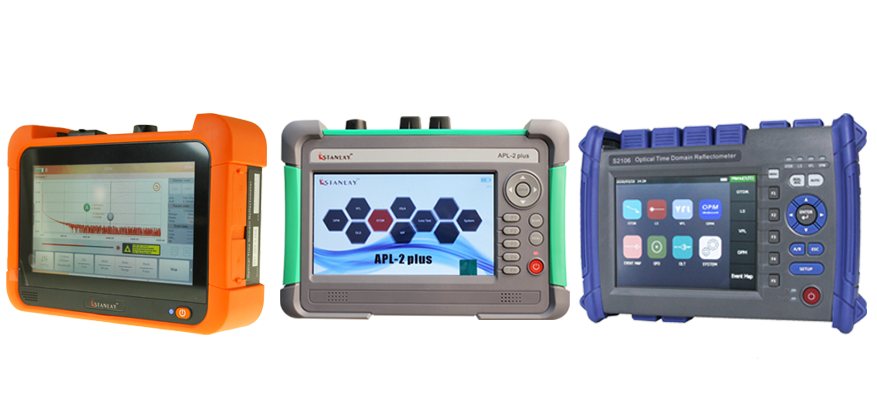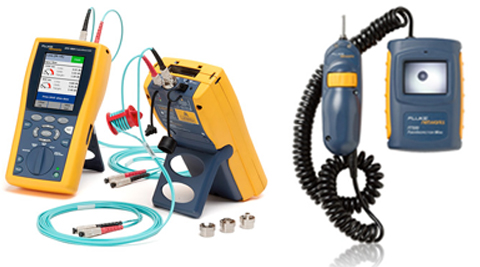How an optical fibre diameter analyzer is changing modern quality assurance
Discovering Advanced Techniques in Fiber Measurement and Their Industry Influence
In today's fabric market, exact fiber measurement is vital for optimizing manufacturing processes and conference sustainability objectives. With the increase of innovative imaging and logical devices, you can gain much deeper insights right into fiber structure and make-up. This shift not only improves performance however also aligns with market standards. As these innovative methods advance, you could question how they can better transform producing practices and effect the future of fabrics.
The Importance of Accurate Fiber Measurement in Textile Manufacturing

Cutting-edge Imaging Technologies for Fiber Analysis
When it pertains to fiber evaluation, cutting-edge imaging modern technologies are game changers. High-resolution microscopy methods and spectroscopic analysis techniques supply you with in-depth understandings right into fiber framework and composition. These developments not only boost accuracy yet additionally enhance your dimension processes.
High-Resolution Microscopy Techniques
High-resolution microscopy strategies have reinvented fiber evaluation, enabling researchers to envision fibers at unprecedented degrees of information. With approaches like scanning electron microscopy (SEM) and transmission electron microscopy (TEM), you can observe fiber morphology, surface features, and cross-sections with impressive quality. These techniques allow you to compare different fiber kinds and analyze their architectural honesty. You'll discover that high-resolution imaging assists determine flaws, incorporations, and other crucial attributes that can affect product efficiency. Improvements in electronic imaging software program have boosted photo handling, making it simpler to assess and translate information. By embracing these cutting-edge strategies, you can drive better precision in fiber measurement and contribute to innovations in various sectors, from textiles to compounds.
Spectroscopic Evaluation Techniques
Spectroscopic evaluation approaches have actually arised as effective devices for fiber characterization, supplying understandings that complement high-resolution microscopy. You can make use of methods like infrared (IR) spectroscopy, which assists determine the chemical composition of fibers by measuring molecular vibrations. Raman spectroscopy provides an additional layer of detail, permitting you to assess molecular frameworks via scattering of single light. These approaches not only enhance your understanding of fiber buildings but also enable the discovery of contaminations and structural variants. By incorporating spectroscopic techniques with traditional microscopy, you gain a much more considerable sight of fibers' physical and chemical qualities, improving your research precision. Ultimately, these advancements can especially influence material choice and quality assurance in various markets.
Advanced Analytical Devices and Their Applications
As you explore the domain of fiber measurement, you'll discover that advanced analytical devices play a vital role in boosting precision and effectiveness. Techniques like high-performance fluid chromatography (HPLC) and gas chromatography (GC) enable you to assess fiber structure with outstanding precision. These devices enable you to recognize specific components and impurities, making sure top quality control in your products.Additionally, utilizing scanning electron microscopy (SEM) gives you a comprehensive view of fiber structure, assisting you understand how various treatments impact performance. Modern software application likewise simplifies data analysis, making it less complicated to translate complicated results and work together across groups.

Effect of Fiber Measurement on Manufacturing Performance
While specific fiber dimension may appear like a little information, it substantially influences production performance in the fabric market. When you buy accurate fiber measurement methods, you can enhance resources usage and reduce waste. This results in much better source allocation, enabling you to generate premium materials without overusing resources.By understanding fiber features, you can customize manufacturing processes to specific products, enhancing your process and minimizing downtime. Knowing the specific tensile toughness of fibers Resources lets you change machinery setups for optimum performance. This not only speeds up manufacturing but also guarantees constant product quality.Moreover, accurate fiber measurement aids you recognize issues early in the production line, protecting against expensive reworks and delays (fiber measurement). Generally, implementing advanced fiber dimension methods the original source improves operations, increases effectiveness, and eventually raises profitability. In today's open market, every detail counts, and accurate fiber measurement is a game-changer
Sustainability Factors To Consider in Fiber Evaluation Techniques
When you evaluate fiber, it's important to contemplate lasting practices that can lessen environmental effect. Utilizing eco-friendly dimension techniques and decreasing waste in your analyses can significantly enhance your overall sustainability. Furthermore, incorporating lifecycle analysis into your strategies can supply a more clear image of your fiber's ecological impact.
Eco-Friendly Measurement Methods
Taking into consideration the growing need for sustainability in various markets, taking on eco-friendly measurement techniques for fiber assessment has actually become important. You can begin by utilizing non-toxic solvents and eco-friendly products in your screening procedures. These choices not only decrease environmental influence but likewise enhance safety for your team. Applying electronic dimension techniques can further decrease waste, as they frequently require fewer physical samples and resources. Additionally, leveraging cutting-edge technologies like near-infrared spectroscopy can produce precise results without harmful chemicals. By choosing these greener approaches, you contribute to an extra sustainable future while preserving high standards in fiber high quality. Inevitably, integrating eco-friendly practices right into your fiber assessment not only straightens with consumer worths but additionally boosts your brand name's reputation.
Reducing Waste in Evaluation
To effectively reduce waste in fiber analysis, you can implement methods that enhance your testing processes and decrease source consumption. Beginning by maximizing sample sizes; utilizing smaller samples can yield exact results while saving materials. Next off, spend in multifunctional devices that allows for various tests without needing several gadgets, lowering energy and resource use. You must likewise think about embracing digital tools for information collection and evaluation, which can reduce down on paper waste and enhance performance. Consistently educating your team on sustainable techniques ensures every person's aboard with waste decrease goals. Teaming up with providers that focus on sustainability can further boost your initiatives, enabling you to assess fibers while keeping a dedication to ecological responsibility.
Lifecycle Evaluation Integration
Integrating lifecycle evaluation (LCA) into fiber assessment strategies can significantly boost sustainability initiatives. By examining the ecological effects of fibers from production to disposal, you can determine areas for improvement. This method helps you recognize source consumption, power usage, and waste generation throughout the fiber's life.When you include LCA, you're not just measuring fiber features; you're likewise considering the ecological impact. This all natural sight allows you to make informed choices that focus on sustainability. You might choose fibers that need less sources or have a lower carbon effect. Eventually, LCA encourages you to maximize procedures, minimize waste, and advertise eco-friendly choices in fiber production, straightening your experiment worldwide sustainability objectives.
Market Criteria and Regulations Forming Fiber Measurement
As the need for high-quality fiber products grows, recognizing the sector standards and regulations that control fiber dimension ends up being crucial. These guidelines assure consistency, accuracy, and security in the measurement procedure, which inevitably impacts item top quality. Organizations like ASTM International and ISO established forth criteria that manufacturers have to adhere to, covering different aspects such as fiber identification, stamina screening, and moisture content analysis.

Future Fads in Fiber Measurement and Textile Manufacturing
Exactly how will improvements in innovation reshape fiber measurement and fabric manufacturing? You'll see a change toward automation and real-time information analysis, enhancing precision and efficiency. Smart sensing units will monitor fiber buildings continuously, allowing for instant changes in production. This means you can expect better textiles with less waste.Moreover, AI and maker learning will certainly forecast trends in customer published here choices, enabling manufacturers to adapt promptly. optical fibre diameter analyzer. By incorporating blockchain modern technology, you'll have far better traceability of materials, ensuring sustainability and ethical sourcing.Virtual truth and augmented fact will play a duty too, providing immersive training experiences for employees on fiber handling and manufacturing processes.As you welcome these changes, the textile market will certainly transform into a much more responsive, sustainable, and ingenious field, setting brand-new criteria for quality and performance. The future of fiber dimension and textile production is bright, and it's time to hop on board
Frequently Asked Questions
What Are the Most Typical Fiber Kind Measured in the Market?
In the market, you'll usually run into natural fibers like cotton and wool, along with artificial options such as polyester and nylon. Each kind has unique buildings, influencing their measurement and application in different items.
Just How Do Fiber Dimensions Impact Consumer Product Top Quality?
Fiber dimensions directly affect consumer item quality by ensuring consistency, resilience, and efficiency. When you recognize these metrics, you can make educated selections, bring about boosted contentment and better total experiences with the products you use.
What Training Is Needed for Fiber Dimension Technicians?
To come to be a fiber dimension service technician, you'll need specialized training in fabric science, measurement strategies, and devices operation. Hands-on experience and certifications can improve your skills, making you competent in accurate fiber evaluation and quality guarantee.
Are There Any Type Of Qualifications for Fiber Dimension Professionals?
Yes, there are qualifications for fiber dimension experts. You can go after alternatives like the Licensed Optical Fiber Professional (CFOT) or various industry-specific credentials that enhance your knowledge and integrity in fiber measurement and testing.
How Can Local Business Execute Fiber Dimension Techniques Successfully?
You can carry out fiber dimension methods successfully by purchasing inexpensive tools, training your team, and developing clear procedures. Team up with industry experts and continuously improve your procedures to boost precision and efficiency over time.